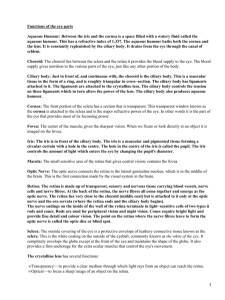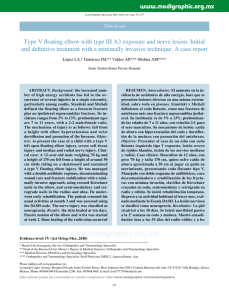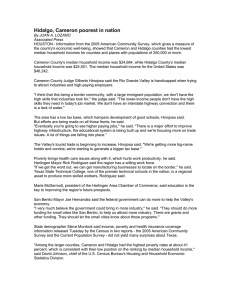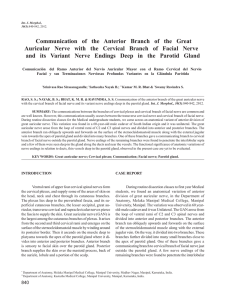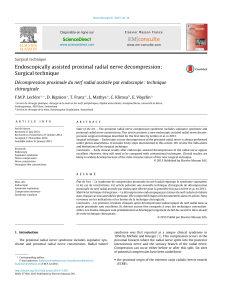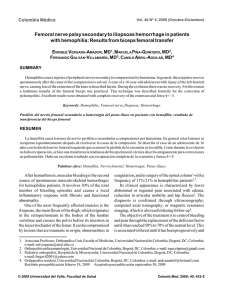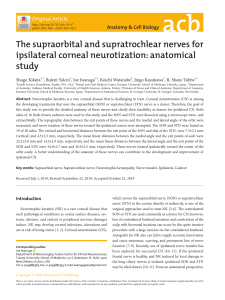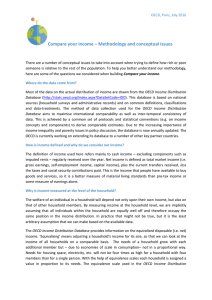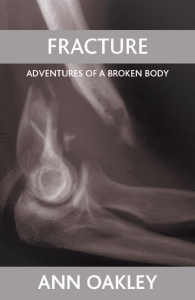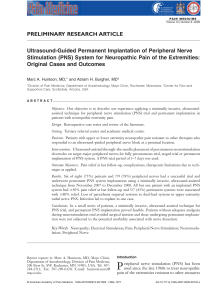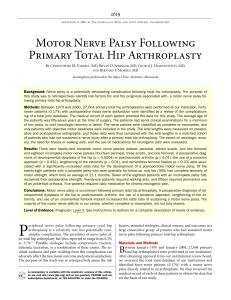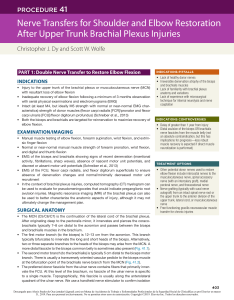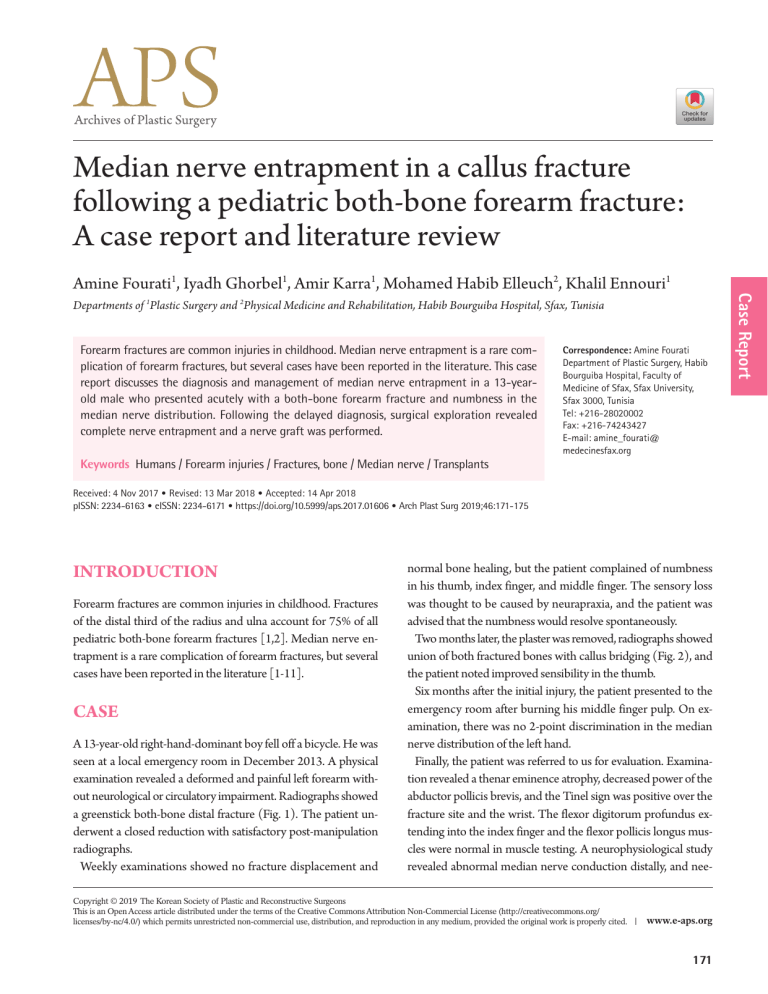
Median nerve entrapment in a callus fracture following a pediatric both-bone forearm fracture: A case report and literature review Departments of 1Plastic Surgery and 2Physical Medicine and Rehabilitation, Habib Bourguiba Hospital, Sfax, Tunisia Forearm fractures are common injuries in childhood. Median nerve entrapment is a rare complication of forearm fractures, but several cases have been reported in the literature. This case report discusses the diagnosis and management of median nerve entrapment in a 13-yearold male who presented acutely with a both-bone forearm fracture and numbness in the median nerve distribution. Following the delayed diagnosis, surgical exploration revealed complete nerve entrapment and a nerve graft was performed. Keywords Humans / Forearm injuries / Fractures, bone / Median nerve / Transplants Correspondence: Amine Fourati Department of Plastic Surgery, Habib Bourguiba Hospital, Faculty of Medicine of Sfax, Sfax University, Sfax 3000, Tunisia Tel: +216-28020002 Fax: +216-74243427 E-mail: amine_fourati@ medecinesfax.org Received: 4 Nov 2017 • Revised: 13 Mar 2018 • Accepted: 14 Apr 2018 pISSN: 2234-6163 • eISSN: 2234-6171 • https://doi.org/10.5999/aps.2017.01606 • Arch Plast Surg 2019;46:171-175 INTRODUCTION Forearm fractures are common injuries in childhood. Fractures of the distal third of the radius and ulna account for 75% of all pediatric both-bone forearm fractures [1,2]. Median nerve entrapment is a rare complication of forearm fractures, but several cases have been reported in the literature [1-11]. CASE A 13-year-old right-hand-dominant boy fell off a bicycle. He was seen at a local emergency room in December 2013. A physical examination revealed a deformed and painful left forearm without neurological or circulatory impairment. Radiographs showed a greenstick both-bone distal fracture (Fig. 1). The patient underwent a closed reduction with satisfactory post-manipulation radiographs. Weekly examinations showed no fracture displacement and normal bone healing, but the patient complained of numbness in his thumb, index finger, and middle finger. The sensory loss was thought to be caused by neurapraxia, and the patient was advised that the numbness would resolve spontaneously. Two months later, the plaster was removed, radiographs showed union of both fractured bones with callus bridging (Fig. 2), and the patient noted improved sensibility in the thumb. Six months after the initial injury, the patient presented to the emergency room after burning his middle finger pulp. On examination, there was no 2-point discrimination in the median nerve distribution of the left hand. Finally, the patient was referred to us for evaluation. Examination revealed a thenar eminence atrophy, decreased power of the abductor pollicis brevis, and the Tinel sign was positive over the fracture site and the wrist. The flexor digitorum profundus extending into the index finger and the flexor pollicis longus muscles were normal in muscle testing. A neurophysiological study revealed abnormal median nerve conduction distally, and nee- Copyright © 2019 The Korean Society of Plastic and Reconstructive Surgeons This is an Open Access article distributed under the terms of the Creative Commons Attribution Non-Commercial License (http://creativecommons.org/ licenses/by-nc/4.0/) which permits unrestricted non-commercial use, distribution, and reproduction in any medium, provided the original work is properly cited. www.e-aps.org 171 Case Report Amine Fourati1, Iyadh Ghorbel1, Amir Karra1, Mohamed Habib Elleuch2, Khalil Ennouri1 Fourati A et al. Nerve entrapment in forearm fracture Fig. 1. The radiographs of the both-bone forearm fracture Fig. 3. Intraoperative view of the surgical exploration The radiographs were obtained in the emergency room, with an anteroposterior view (A) and lateral view of the radial and ulnar fracture with dorsal angulation (B). The surgical exploration revealed entrapment of the median nerve at the radial fracture site. Fig. 4. Intraoperative view after a neurolysis attempt A B Neurolysis failed because the nerve was caught in the bony callus. Dissection was impossible. The picture shows a nerve discontinuity caused by attempting release, and a flattening in the distal part. Fig. 2. The radiographic follow-up after 2 months Radiographs showed the union of the fracture without angulation in the coronal plane (A) and 15° of tolerated angulation in the sagittal plane (B). A B dle electromyography detected denervation of the abductor pollicis brevis. Radiographs showed that the fracture had healed with only a slight irregularity. Eight months after the injury, surgical exploration of the median nerve was carried out. An anterior incision was performed 172 on the left forearm, centered on the area of the positive Tinel sign. The flexor muscles were split and the median nerve was identified. The nerve was trapped in the radius callus fracture (Fig. 3). Neurolysis was attempted, but was impossible (Fig. 4). After resection of the injured nerve and the neuroma, we found a loss of substance (Fig. 5). The possibility of a nerve suture without tension was tested with a nylon 9/0 suture, but it was not possible, even with flexion of the wrist. A nerve graft was performed using the left sural nerve (Fig. 6). Two years after surgery, follow-up revealed recovery of the abductor pollicis brevis, and 2-point discrimination was 6 mm on the thumbs and 10 mm on the index and the middle finger. Vol. 46 / No. 2 / March 2019 Fig. 5. Intraoperative view of nerve loss of substance Fig. 7. The radiographic follow-up after 8 months The dissected part, the neuroma, and the glioma were resected, resulting into a loss of substance measuring 20 mm. (A, B) The radiograph shows complete bone healing and bone remodeling. Note the bony canal (yellow arrow) at the healed radius fracture site. Fig. 6. Intraoperative view of the median nerve graft After excision of the entrapped part, the median nerve defect was grafted using the sural nerve. A DISCUSSION Median nerve entrapment in forearm fractures in children is uncommon. Eleven cases have reported in the literature from 1974 to 2016 (Table 1). The mean age of the affected patients was 11 years (range, 6–13 years). Except for the cases described by Nunley and Urbaniak [10] and Yeo et al. [3], in which the nerve entrapment was at an ulnar fracture site, the nine other cases were due to a radial fracture. The radial fractures were proximal in one case [7], at the mid-shaft in eight cases, and in the distal third in the two remaining cases and our case. Closed reduction was performed in eight cases [1,3-8,11], an open reduction in one case [2], and no reduction was needed in two cases [9,10]. B In addition to the median nerve, the interosseous nerve was involved in one case [8]. Except for the case described by Hurst and Aldridge [2], in which surgical exploration was immediately indicated, both the diagnosis and the surgical exploration were delayed. In the reported cases, the median nerve entrapment was released after 39 days to 24 months [7,11]. The reasons for the delayed diagnosis include the absence of clinician continuity in serial follow-up examinations, the unclear nature of complaints from affected children, and the assumption that such numbness will prove to be temporary. The presence of a slight bony irregularity, a bony canal [10], or a bony spike at the site of the fracture may suggest median nerve entrapment [7]. However, those radiological irregularities are usually only appreciated postoperatively [7]. In our case, a bony canal was present on the anteroposterior view of the healed radial fracture (Fig. 7). Magnetic resonance imaging (MRI) was only performed in one case [3], although it is useful for tracing the median nerve course in the forearm. Yanagibayashi et al. [12] advocate the use of MRI earlier if entrapment is suspected. It enables immediate visualization of the entrapment, and surgical exploration can be promptly performed to release the entrapment. Neurolysis and neurorrhaphy were the most common management procedures, and a median nerve graft was performed 173 Age (yr) Wolfe et al. [11] 1974 7 Radius and ulna, middle and distal Median nerve third junction Radius Closed reduction 39 day Neurorrhaphy 2 yr Complete recovery Nunley and Urbaniak [10] 1980 6 Proximal third of the ulna Median nerve Ulna Long-arm cast (no reduction needed) 9 mon Neurorrhaphy 7 mon Nearly complete recovery Genelin et al. [9] 1988 13 Radius and ulna, middle third Madian nerve Radius No reduction needed 3 mon Nerve graft 8 mon Nearly complete recovery, with persistent dernervation signs in electromyography Gainor et al. [8] 1990 12 Radius and ulna, mid-shaft Median and anterior Radius interosseous nerves Closed reduction and casting 5 mon and 15 day Neurolysis for both and median nerve neurorrhaphy 6 mon Complete sensory recovery, incomplete muscle strength recovery al-Qattan et al. [7] 1994 10 Radius and ulna, middle third Median nerve Radius Closed reduction 24 mon Neurolysis 9 mon Complete recovery Huang et al. [6] 1998 13 Junction of the proximal and middle Median nerve thirds of the radius and ulna Radius Closed reduction and longarm cast 4 mon and 14 day Neurorrhaphy 11 mon Good sensory recovery, no motion regained Proubasta et al. [5] 1999 12 Closed both-bone forearm fracture, Median nerve distal third Radius Closed reduction and longarm cast 6 wk Neurolysis 6 mon Full sensory and motion recovery Bendre et al. [4] 2005 12 Closed middle-third both-bone forearm fracture Median nerve Radius Closed reduction and longarm cast 15 mon Neurolysis 1 yr Full sensory and motion recovery Hurst and Aldridge [2] 2006 13 Closed midshaft both-bone forearm Median nerve fracture Radius Open reduction and internal plate fixation 0 day Neurolysis 14 wk Complete recovery Ardolino et al. [1] 2009 12 Closed both-bone distal-third fracture Median nerver Fracture site Closed reduction then discharge 4 mon and 7 day Neurorrhaphy 1 yr Complete motion recovery, with persistent paresthesia Yeo et al. [3] 2011 11 Radius and ulna, middle third Median nerve Ulna Closed reduction and immobilization 6 mon Neurolysis, then neurorrhaphy 1 yr Complete recovery Current study 2016 13 Closed both-bone distal-third fracture Median nerve Radius Closed reduction and longarm cast 8 mon Nerve graft 2 yr Complete motion recovery, good sensory recovery Nerve Fracture treatment Surgical­ management Follow-up Outcome Nerve entrapment in forearm fracture Year Fracture Entrapment location Surgical exploration delay Author Fourati A et al. 174 Table 1. Literature review of nerve entrapment in the osseous callus in pediatric forearm fractures Vol. 46 / No. 2 / March 2019 in one other case [9], as well as in our case. Fortunately, the literature has demonstrated that median nerve function shows excellent recovery in childhood, even with delayed surgery. This case emphasizes the importance of a meticulous clinical examination before and after closed reduction to detect a nerve injury. We highlight the value of clinician continuity in serial follow-up examinations. Early exploration of persistent neurological deficits is advocated, and MRI may be useful. NOTES Conflict of interest No potential conflict of interest relevant to this article was reported. Ethical approval The study was approved by the Habib Bourguiba University Hospital Ethics Committee (IRB No. 7-17) and performed in accordance with the principles of the Declaration of Helsinki. Written informed consents were obtained. Patient consent The patient provided written informed consent for the publication and the use of his images. Author contribution Clinical study, drafting, and approval of the manuscript: Fourati A. Literature review: Karra A. Critical revision: Ghorbel I. Electro­myography study: Elleuch MH. Study supervision: Ennouri K. ORCID Amine Fourati https://orcid.org/0000-0003-3401-2010 Iyadh Ghorbel https://orcid.org/0000-0001-7395-4196 Amir Karra https://orcid.org/0000-0001-9827-2511 Mohamed Habib Elleuch https://orcid.org/0000-0002-74324839 Khalil Ennouri https://orcid.org/0000-0003-1387-1772 REFERENCES 1. Ardolino A, Webb D, Richards S. Median nerve entrapment in fracture callus following a paediatric forearm fracture: case report and review of the literature. Injury Extra 2009;40:274-6. 2. Hurst JM, Aldridge JM 3rd. Median nerve entrapment in a pediatric both-bone forearm fracture: recognition and management in the acute setting. J Surg Orthop Adv 2006;15: 214-6. 3. Yeo G, Prodger S, Latendresse K. Median nerve entrapment in a paediatric fracture of the ulna demonstrated by magnetic resonance imaging. J Hand Surg Eur Vol 2011;36:329-30. 4. Bendre A, Adeeb M, Malkan D. Median nerve entrapment in mid-shaft radius fracture callus. Eur J Trauma 2005;31: 407-8. 5. Proubasta IR, De Sena L, Caceres EP. Entrapment of the median nerve in a greenstick forearm fracture: a case report and review of the literature. Bull Hosp Jt Dis 1999;58:220-3. 6. Huang K, Pun WK, Coleman S. Entrapment and transection of the median nerve associated with greenstick fractures of the forearm: case report and review of the literature. J Trauma 1998;44:1101-2. 7. al-Qattan MM, Clarke HM, Zimmer P. Radiological signs of entrapment of the median nerve in forearm shaft fractures. J Hand Surg Br 1994;19:713-9. 8. Gainor BJ, Olson S. Combined entrapment of the median and anterior interosseous nerves in a pediatric both-bone forearm fracture. J Orthop Trauma 1990;4:197-9. 9. Genelin F, Karlbauer AF, Gasperschitz F. Greenstick fracture of the forearm with median nerve entrapment. J Emerg Med 1988;6:381-5. 10. Nunley JA, Urbaniak JR. Partial bony entrapment of the median nerve in a greenstick fracture of the ulna. J Hand Surg Am 1980;5:557-9. 11. Wolfe JS, Eyring EJ. Median-nerve entrapment within a greenstick fracture: a case report. J Bone Joint Surg Am 1974; 56:1270-2. 12. Yanagibayashi S, Yamamoto N, Yoshida R, et al. Magnetic resonance imaging visualizes median nerve entrapment due to radius fracture and allows immediate surgical release. Case Rep Orthop 2015;2015:703790. 175
